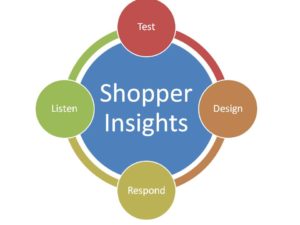No matter how far you’ve gone on a wrong road, turn back. — Turkish Proverb
They keep coming in.
Each week, I get a new PowerPoint deck to review.
Eight out of ten aspire to build a customer-centric supply chain.
Companies really want to be customer-centric, but they are on the WRONG path. Like the Turkish proverb, it is time to turn back.
Today’s supply chain is blind to the  customer. The technologies being installed –APS, BI, CRM, ERP, SRM– do not help. They are like the legos in this picture. Applications are strewn across the enterprise with no clear plan on how to listen, test, serve, and deliver a customer-centric response.
customer. The technologies being installed –APS, BI, CRM, ERP, SRM– do not help. They are like the legos in this picture. Applications are strewn across the enterprise with no clear plan on how to listen, test, serve, and deliver a customer-centric response.
So, take the challenge.
Put your money where your mouth is.
Design and deliver a TRUE customer-centric supply chain.
In this article, I share insights based on discussions with over 100 companies.
Let me start with a disclaimer. The answer to this challenge is industry-specific. It also requires a complete revamp of the front office, and a redesign of the supply chain. This journey is a starting point to resolve the dance with the white elephant walk (reference http://www.supplychainshaman.com/2010/04/dancing-with-a-white-elephant/).
Since, the answer is VERY industry specific, I will tackle each value chain in separate articles. Here I will focus on one value chain: the redesign of consumer products value chain. Next month, I will focus on high tech and pharmaceutical value chains. In July, I will share insights on retail.
Align
The biggest barrier to a customer-centric strategy is organizational alignment. As long as sales incentives are tied to volume, marketing is rewarded on market share, and operations on cost, companies will never achieve a customer-centric response. However, for two out of five US consumer companies, there is a new sheriff in town. This new role –Chief Customer Officer–must tackle this obstacle as JOB #1.
In this shift, companies must not confuse customer-centric with a customer-first strategy. In a customer-first strategy, companies respond to whatever a customer requests. In a customer-centric strategy, the value chain makes choices on how to serve and respond to the customer based on cost-to-serve, channel and value chain strategies. This organization has BIG ears with active listening, and strong horizontal processes to shape and orchestrate demand. The key is to orchestrate cross-functional alignment with an outside-in focus.
Starting on the Right Foot
Being customer-centric is dependent on the organization’s ability to listen, test, design and respond based on shopper insights.
Shopper Insights: The goal is to effectively influence the shopper throughout the lifecycle: before they buy, product on the shelf to enable the purchase and delighting the consumer in usage. Traditionally, consumer products companies focused on consumer insights (product usage feedback and panel preferences) versus shopper insights (focus on the consumer through the purchase process: before, during and after consumption). This is a major change. And, shopper and customer insights need to be used cross-functionally. Most are locked behind the walls of the marketing organization.
Companies used to have the luxury to broad brush the market response. The broad-brush approach meant having all products on all shelves, offering the same trade promotion program for all retailers, and a zealous focus on lift. This luxury is over. Today, there is a shift to micro-segmentation focused on retailer buying persona’s, category management differing by store cluster, a focus on market basket behavior and personalization of the shopping experience through mobility in the store.
It is about choice. It may mean less. Target is testing stores with 50% fewer items. At a recent IRI conference, Grant LaMontagne, Chief Customer Officer of Clorox presented that they found that they increased volume by 8% by selling fewer items. Sara Lee reported that they grew the category through careful selection of the number of servings/package.
Based on IRI data, today, 55% of shoppers shop 10 or more stores, and 60% will go elsewhere for a better price. This is a sharp difference from two years ago when 35% of shoppers cross-shopped 10 or more formats. Bricks are merging with clicks as shoppers focus on lists, routes and trips. Social commerce is helping to streamline this process for Millennials representing a 50 billion dollar market opportunity.
e-Commerce grows in importance to fill the gaps between bricks and clicks. 90% of Best Buy shoppers start on-line before they go to the store. There is now a marketplace at Sears where suppliers can directly market an on-line presence. Alice.com–offering direct links to consumers with free shipping– predicts that it will ship nearly one million boxes in 2010. The endless aisles of e-commerce enables commerce options for tier 2 and 3 brands that are being squeezed from the shelf.
Listen: Last week, I was talking to a company actively monitoring the voices of the customer at 143 listening posts. What is a listening post? It is a point in the value chain of customer communication. They take different forms. It includes unstructured text comments in order management, distributor survey form feedback in Direct Store Delivery (DSD), consumer complaints to the call center, blog reviews and comments on the Internet, return and damage information, etc. The list goes on and on and on.
How well do you listen? Most of this data is unstructured text. The good news is that the technologies to help you listen– sentiment analysis from providers like Clarabridge, Lexalytics and SAS Institute– has come along way in the past five years. Sentiment analysis, and the design of listening posts, is a consideration in any customer-centric design. Companies with a focus on listening posts understand that the most powerful force in demand shaping is word of mouth.
Test. With the evolution of micro-segmentation, store clusters, and specialized offers, market testing with active test and learn strategies grows in importance. The secret is the design of the test, access to clean data, and discovery tools for analysis. To help, Applied Predictive Analytics (APT) continues to make progress to systematize test and learn processes.
Design. We speak to the shopper in many different ways. With the rise of social commerce–the use of social technologies to drive commerce–power in the value chain is shifting from the retail to the shopper. The choices and inter-relationships between tactics are more complex.  Retailers are trying to shift spending to increase trade, media proliferation is changing the nature of advertising, category management is becoming more targeted and social commerce is a new frontier. Companies struggle with how to make the right choices.
Retailers are trying to shift spending to increase trade, media proliferation is changing the nature of advertising, category management is becoming more targeted and social commerce is a new frontier. Companies struggle with how to make the right choices.
The good news is that there are now “hooks” to use shopper insights in solutions from Demandtec, M-Factor, Nielsen, and Symphony/IRI. These solutions are on a fast track to change. Shopper insights need to be central to cross-functional response.
Respond. Demand sensing and active/aligned processes for demand shaping (price, trade promotion, new product launch, and incentives) are core to the customer-centric response.
We got our R’s all wrong. Supply chains, as currently designed, cannot sense. They have a blind response. For the past decade, supply chain leaders have pushed a vision of RFID– but, to no avail– to improve sensing. The tags are still too expensive for most use cases.
QR codes– a two-dimensional tag– was invented in Japan in 1994 to enable high-speed scanning. Today, these codes are read by cameras in mobile phones and off of mobile phones to scanners in the store. These codes are PACKED with information about the shopper. This could be a game changer. For decades, consumers have used coupons. Now the supply chain has the ability to use the data about the consumer that uses coupons.
For example, a retailer, like Best Buy, can make a personal connection to its Facebook fans or to their loyal shoppers through their loyalty program on-line. A unique customer ID is embedded in the QR tag. When it is used, Best Buy can track the usage back to either the customer’s behavior on-line (what they searched versus what they bought) and offer new coupons to shape demand. These programs are evolving, but new forms of predictive analytics are right around the corner
QR tags also enable direct communication to the consumer on the safe and secure supply chain. It can answer questions like:
- Is this product safe to eat?
- What is the carbon footprint of this product?
- Where was this product produced?
The problem is that the back office processes are not able to provide information to communicate this type of direct information to the consumer. This is changing. The bar is rising. Will your processes be able to keep up?
Similarly, listening posts need to be tied to manufacturing quality, warranty, and return systems. What is the latency in your process to get true customer feedback?
Put your Money where your Mouth is….
Today’s value chains are designed for efficient delivery of a broad-brush response. This needs to change. I am glad to see a new sheriff in town to deliver the TRUE customer-centric response. How do we help this new role and define customer-centric processes for the Chief Customer Officer? What do you see at the greatest challenges? How do you like the model? How do supply chains need to change?
This week I am speaking at the MIT supply chain forum. Next week, I am off to the JDA conference in Las Vegas and the Health Care forum in Indianapolis. I would love to catch-up with you in my travels. Please share your feedback on this article with the community.
Many thanks to help from IRI, Accenture Innovation Center in Milan, and my fellow colleagues at Altimeter Group for help on this article.
This is not a pay for play article. Two of the companies listed in this blog are Altimeter Group clients.






